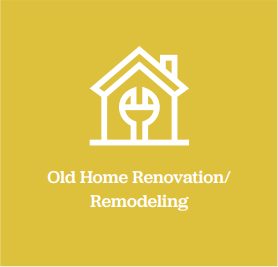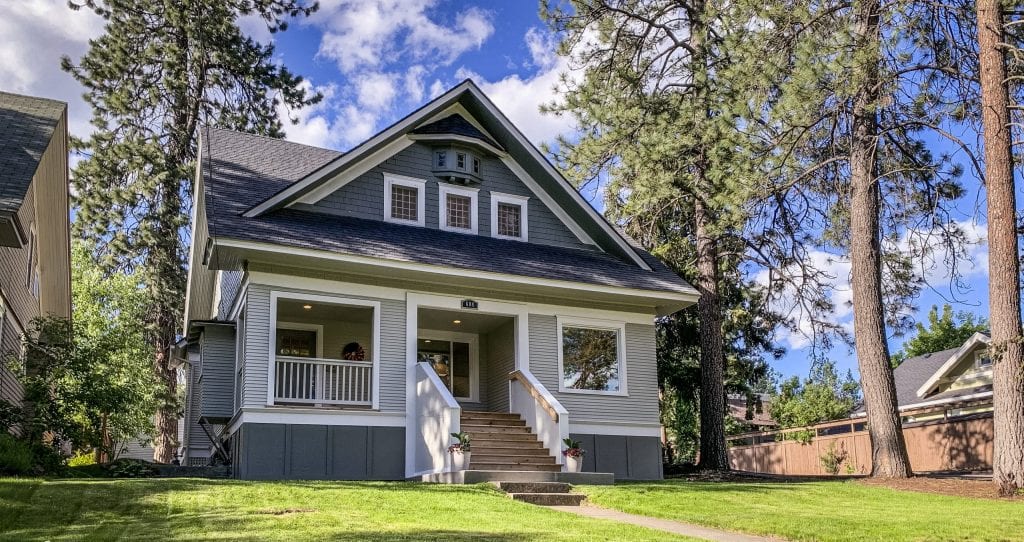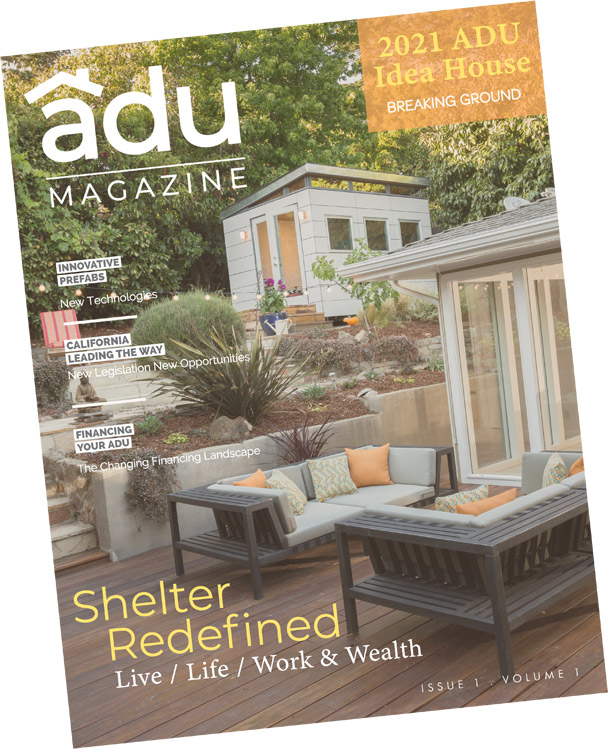
OLD HOMERenovation
The 2021 ADU Idea House, based here in Roseville, is 110-year-old.
Many American homes are older, and California, while a younger state than others on the east coast, is no exception.
In fact, the average age of a home here in California is surprisingly about 38 years old. Ironically, that is about the same median age of all people in California (36.4 years average).
The statistics are a bit deceiving though, as there are quite a few older homes than new. Many cities, especially in suburbia and in newly developed rural areas, have new home developments. But at the heart of many expanding municipalities with large master-planned communities, it is not uncommon to find nearby older neighborhoods.
For instance, the average home age here in Roseville (where the 2021 ADU Idea House is located), is 40 years old. That is a notable number as the city has an extensive amount of new development – meaning it still has a very large number of older homes in more historic neighborhoods. While new construction is always an attraction to buyers, and Roseville has many dynamic new home communities, the average American isn’t often living in a new residence. As an example, one study showed that 41% of owner-occupied housing in the United States was built prior to 1969. Another showed 36% were constructed before 1960.
That means a very large number of individuals are living in homes that are over 59 years old!
We generally think of retirement age being 65. But how long can your house last? Today, well-built and maintained homes can last 50 to 100 years with proper maintenance. But, what about homes built 60 years or even longer ago when construction materials and processes were vastly different?
That’s a question many homebuyers struggle with as they consider buying an older home.
There are advantages and disadvantages to buying and renovating an older home – especially one as old as our 110-year-old ADU Idea House.
LEARN MORE >> HISTORY OF THE 2021 ADU IDEA HOUSE

Old Home Renovation / Remodeling
There is a lot to like about older homes. From an advantage standpoint, this often includes location, character, and price.
Older homes have often craftsmanship and materials that can’t be replicated in modern construction without significant costs. Many of these homes are also in wonderful older neighborhoods with established parks, trees, and wide streets. They tend to have unique architectural designs and qualities – homes with character. Older homes also have a tendency to be closer to city centers with access to infrastructure and living amenities. It is not uncommon to find newer homes further away from the core of town as building continued to expand outward, and cities grew larger in size. And, of keen interest to buyers, older homes (especially those needing renovation) are often much more affordable.
On the negative side is the unknown that potentially lurks beneath the walls. Also, the cost and time required when looking to live comfortably or renovate an older home.
Old homes have special challenges when it comes to repair. They can be daunting to the new buyer or owner that has limited understanding of construction or fears many of the costly issues that might eventually arise within an older residence.
It might surprise you that this isn’t just an emotion experienced by those of us that don’t know in-depth construction methods or consider themselves handy around the house. It applies to construction contractors and building professionals as well.
The first thing you learn when dealing with an older home is that not every construction professional is right for an old home project. It is a special breed of professional that wants and feels comfortable working on these historic gems. Especially one as old as our 110-year-old Rail House.
Many contractors feel at ease building a new home, but not necessarily renovating an older one. Part of this is about economics. New Home construction is often faster and more direct; a contractor can likely build a new home in half the time as they would if doing a top to bottom renovation on an older home as we have here in Roseville this year. Essentially, it isn’t in their best economic interests to work on an older home when they can essentially make twice as much money in the same amount of time building a new one.
We just happened to be fortunate and partner with one (CEC Homes) who is a recognized regional custom and production home builder, but also had experience and desire to work on a complex and challenging niche-project.

The tremendous number of challenges presented with the residence was exactly why we chose the Rail House as our 2021 ADU Idea House.
While it has great bones, history, location, and character, it also has nearly every issue that a homebuyer or owner might encounter when dealing with an older home.
It is the ultimate representative resource when dealing with old home renovation, construction, and maintenance issues.
In our minds, there is not one conceivable issue (outside of fire damage) that you might run into on your own with an old home that we haven’t dealt with and addressed here in the Rail House. And our efforts to renovate and rehabilitate the residence should function as a resource and blueprint to any buyer considering purchasing an older home.
Built in 1909/1910, what we have named the “Rail House,” is very similar to traditional “railroad homes” that are often seen in older communities that had growing industry. They have square like appearance and high hip roofs. Many of these homes were constructed to quickly meet the housing requirements of growing rail and factory communities like Roseville. The house also appears to have been a kit home like those popularized by Sears in its mail-order catalog. A number of these kit home manufacturers were functioning through the early to mid-1900s. However, the Rail House predates that – really an excellent example of one of the first prefabricated homes in California history.
The 2021 ADU Idea House still has markings and bares an actual wood plaque nailed into the basement rafters referencing framing wood number used from a series of crates.
The house appears to have been modified several times over its 100-year period. And interestingly, was physically moved by cart/wagon and horse/oxen to Roseville from nearby location when the rail yard moved back to the city in 1910. Quite a feat for its day.
In its layout, when we purchased it, the home was 1500 square feet with three small bedrooms and two baths. The second bath was technically functional but was built in the corner of what we believe to be a previous deck with an old metal shower reminiscent of rural homes or campsites.
As with most older homes, this didn’t have hallways; it is essentially a connection of rooms – movement was directly through one room into the next. Doorways within the dwelling were narrow, and it possessed limited closet space (typical to many older homes as people just didn’t have that many clothes back in 1910) with one closet constructed on the backside next to what was the corner metal shower. The kitchen layout was regretfully uncharming, worn, and lacked functionality and access.
VIRTUAL TOUR >> BEFORE THE TRANSFORMATION

For the past 30 years, the home has sat or been a rental. It suffered extensively from lack of maintenance and was dilapidated and worn.
In fact, when we originally saw the home, we were shocked at the state of disrepair. The smell, broken heating, exposed wiring, and bugs were something that put off most buyers. To us, this was the perfect residence to renovate. You had to look beyond the issues see the bones and feel the potential.
And there were quite a few issues. The home inspector spent four hours in the home, and in the end, thanked us for allowing him to do the inspection. There were things here at the home that he said he had “only seen in textbooks.”
He cocked his head and let us know the list of problems was going to be extensive. And he wasn’t kidding, as he later handed us a roughly 100-page initial inspection report.
Problems included pipes, electric, HVAC, asbestos, water intrusion, dry rot, leaking roof, buckling foundation, cracking walls, broken hardware throughout, failed windows, roof issues, etc. Not to mention the bugs, dirt, and grime. The list went on and on. You name it, the problem existed. The quick solution we were told by contractors: demolish the home and start again on a clean lot.
Most would have run, but where others saw problems, we saw what was possible. More importantly, we view the Rail House serving as a living breathing laboratory and Think Tank of nearly every single problem that an individual living in an older home might potentially experience as it ages or that an owner might discover if they undertake remodeling/construction on their own.
Our goal at ADU Magazine is to share our knowledge and experience throughout the entire process of building the 2021 ADU Idea House. This includes undertaking the planning, design, permitting, construction processes as well as selecting products, doing interior design, and landscaping prior to opening.
We look forward to sharing the journey with you.






